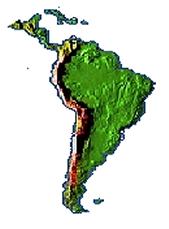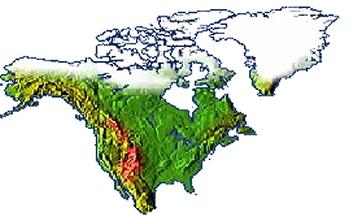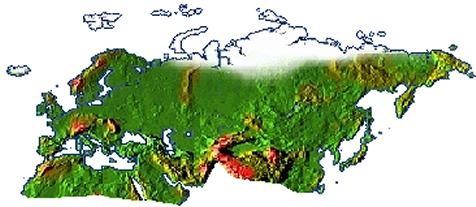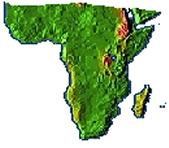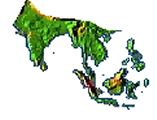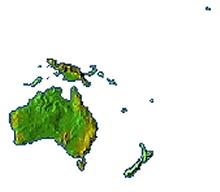| Biogeography studies distribution of Fauna and Flora around the World. Biogeographycal Regions don't correspond exactly to continents and are not identical considering ditribution of animal (Zoogeography) and plants (Phytogeography). So, we can find many European animals and plants in North Africa, while in Maroc and in Senegal, in the same continent, not too far and not extremely different in climate, there are very different Fauna and Flora.We can approximately identify 6 different Biogeographical Regions, most of them divided in Subregions or Provinces: | |
Neotropical Region |
|
| It corresponds quite well to South America, Central America, the Southern half of Mexico and some isles: Galapagos, Trinidad, Cuba, Puertorico, Haiti, ecc. Last islands and Mexico show a transition to Nearctic Region. In this region we can easily identify a Subregion in Chile and SW Argentina. Buprestidae of this subregion are very different from other Neotropical Buprestidae, but some of them are very similar to some Australian species (S.American Conognatha and Dactylozodes with Australian Stigmodera, Chilean Epistomentis with Australian Cyria) |
|
Nearctic Region |
|
| Essentually, it is the North American continent, except the South of Mexico. Caribbean islands are a transition to Neotropical Region. Fauna and Flora of Nearctic Region are very similar to Palearctic species, especially in the Northern territories of these two regions. It's not strange, considering Alaska and East Siberia were connected several times during glaciations. Also Buprestid Fauna is quite similar, but just very few species are common to both regions (I remember Melanophila acuminata). So happens because most of Buprestidae concentrate in Southern lands of these regions. A very typical Buprestid Fauna is known for South West of the Region (California, etc.), with endemic groups: Schizopinae, Thryncopiginae, etc. |
|
| Palearctic Region | |
| North and Central Asia, Middle Orient, Europe, Africa North of Sahara and most ot the Arabian Peninsula form the larger Biogeographycal Region. Fauna and Flora are quite uniform in the North, from Scandinavian Peninsula to Far East of Siberia, but they are more diversificated in the Southern lands. A subregion particularly rich in Buprestidae is the Mediterranean one. Very typical is the Palearctic group of Julodinae (many Julodis, Julodella and Aaata finchi). The Southern Mediterranean Subregion presents a transition to Ethiopic Fauna. In the South East Fauna there are many species related to Oriental Region Buprestidae (Chrysodema, Chrysochroa, etc.). |
|
Ethiopic Region |
|
| It is the whole Africa South of Sahara, the Southern corner of Arabian Peninsula, Madagascar anf few small islands. Buprestids' Fauna of Madagascar (with Comores) is very different, mostly for the large number of species belonging to the endemic genus Polybothris. Buprestid Fauna of Mascarene Islands is endemic but near to extintion. Aso the Cape Province shows a very interesting Fauna of Buprestidae. This is the country of Ethiopic group of Julodis and many endemic genera. |
|
| Oriental Region | |
| This is one of the smaller regions, with India, Ceylon, Indochina, Indonesia, Malaysia, Philippines and small islands of Indian Ocean: Seichelles, etc. The most typical Buprestidae are many Chrysochroinae (Chrysochroa, Catoxantha, Megaloxantha), Psilpterinae and Chalcophorinae, like Chrysodema, with many species, mostly in Philippines. Many of the most beautiful Buprestidae come from this Region. |
|
Australian Region |
|
| It corresponds to Australia, Tasmania, Papua New Guinea and surrounding islands, New Zealand and thousands of small and very small Pacific islands. Stigmoderinae like Stigmodera, Metaxymorpha, Calodema and Julodimorpha are typical of Fauna of Australia, Tasmania and Papua New Guinea, while Pacific Buprestids are mostly represented by several species of Paracupta. A quite different and poor Fauna of Buprestidae lives in New Zealand. |
|
